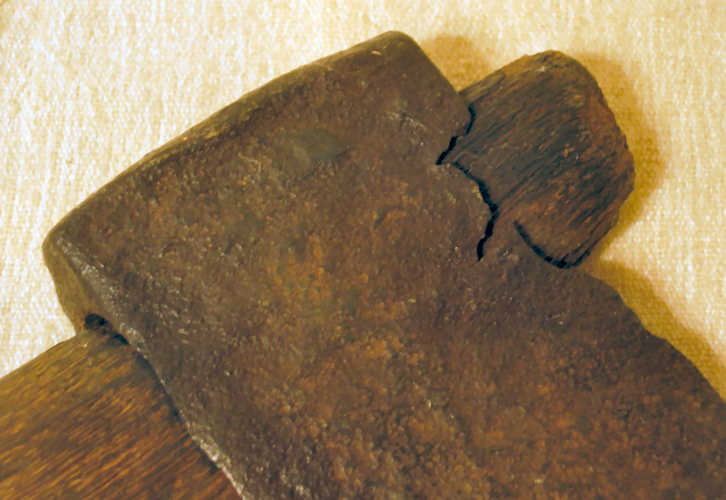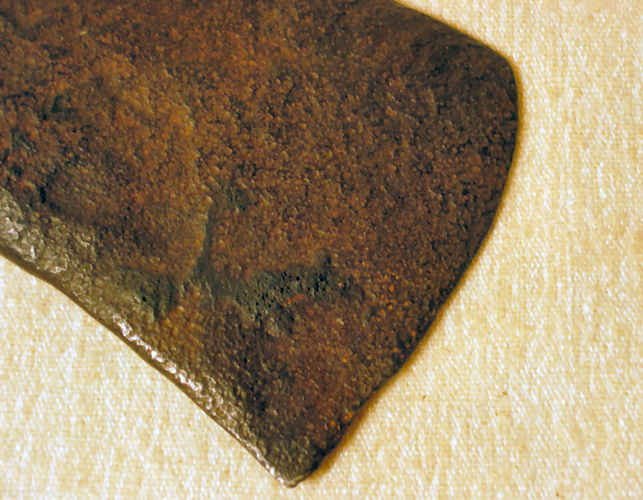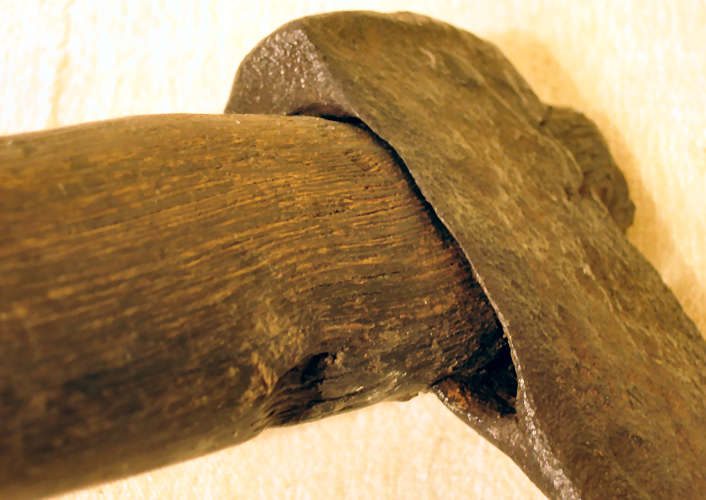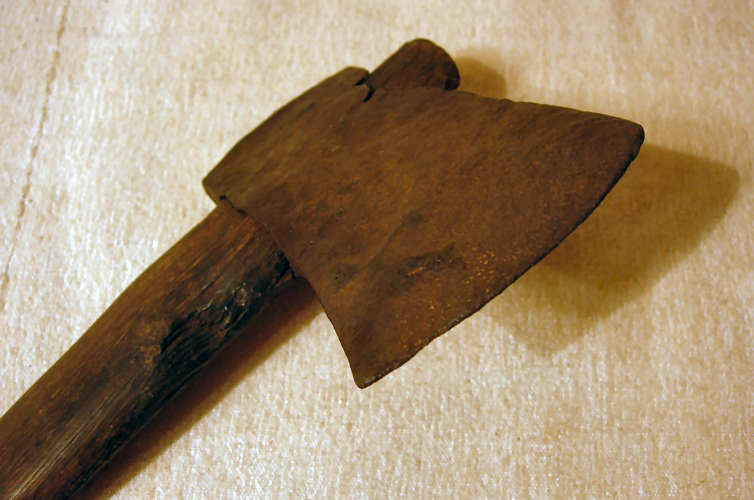

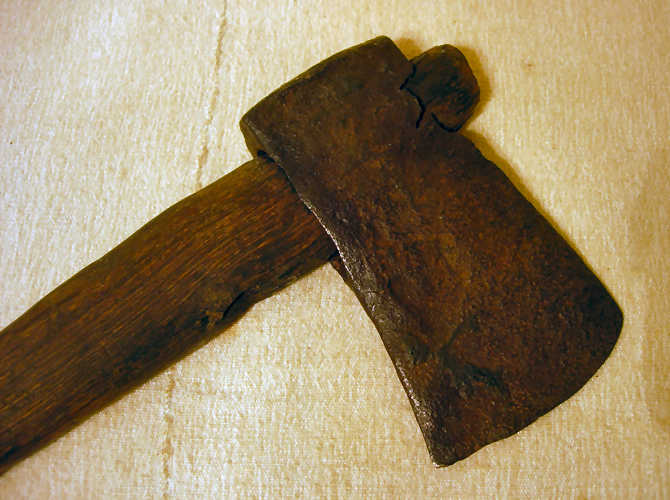
| This ax is an example of a felling ax which was popular throughout Europe from Roman times. It is also the type of ax that was traded by the Euro-Americans with the indigenous peoples in the New World, and therefore became known in the Colonies as a trade ax. The ax was produced by a blacksmith. To begin with, a piece of iron was flattened and shaped into a long rectangle by heating on the forge and then being pounded flat. The two ends would be heated white hot and pounded thinner than the middle, in the process causing the piece of metal to widen a bit. This gave the piece of metal the basic 'wedge' shape with the cutting edge wider than the rest. Then the middle of the piece of metal would be heated and the blacksmith would lay the glowing hot piece atop a cold, hardened iron rod. He would then proceed to strike the heated metal piece with his hammer, bending the two ends over and around the iron rod. After pounding the heated metal so many times, the blacksmith would again place the piece into the forge to reheat it to the white hot state. This process of heating the metal piece, placing it over the iron rod, and then pounding it with the hammer to bend the two ends toward each other was repeated many times. The re-heating of the piece of metal (i.e. annealing) kept the metal from becoming brittle. As the two ends were repeatedly pounded over the iron rod, they became more and more flattened. When the two ends finally met, the blacksmith would pound the two together, and the two ends would essentially weld together. The blacksmith would then pound the folded over piece of metal to weld it together from the cutting edge to where it was bent around the iron rod. When finished, the weld line might not even be noticeable with the naked eye. The iron rod would be removed, leaving a hole, called the eye, into which a wood handle, or haft, could later be inserted. If the blacksmith had any, a wedge shaped piece of steel would be inserted between the two flattened edges before they would be welded together. The piece of steel would weld to the iron (it being just a more refined piece of iron itself) and make the cutting edge much stronger than the iron alone. The example shown above exhibits a flat edge where the metal was bent around to form the eye, opposite to the cutting edge. This flattened part of the ax was called the poll. It was not until the 1740s that the poll became pronounced. It was enlarged and developed by blacksmiths in order to make the ax more manageable when in use. In axes in which the metal was simply bent around the forming rod, without an enlarged poll, the primary distribution of the weight was toward the cutting edge. When swung, an ax without a heavy poll would tend to wobble. By flattening the metal into a more pronounced poll, the blacksmith was able to shift the center of the weight distribution toward the handle, giving the user more control. The ax shown above is an example of the transitional stage from axes which had no pronounced poll to those of the latter half of the 1700s which had polls that outweighed the cutting edge. |
